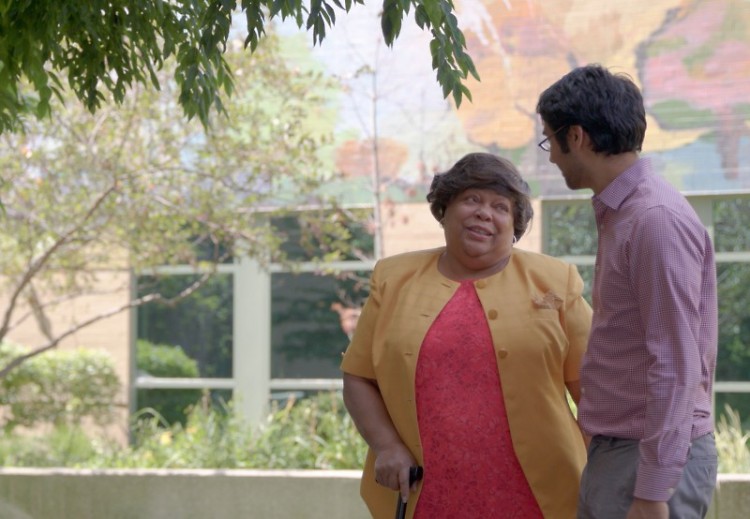Saundra gently clutches a cherished photo of her beautiful family. With dozens of grandchildren and great-grandchildren, she has much to be thankful for. “They mean the world to me,” she says. “In fact, my world is all about taking care of these children.”
But her whole world nearly came crashing down in February of 2018, and she came close to never seeing her family again.
“I believe there’s a purpose for me, and God saved me for a reason.”
After suffering from consistent ear pain, Saundra visited her doctor and was referred for a brain scan. She was stunned when the scan revealed a large aneurysm that was in danger of bursting at any moment. “It turns out I’ve been living with that aneurysm for a long time. I believe I had angels sitting on my shoulders,” she says through tears.
An aneurysm occurs when a blood vessel becomes weakened and balloons out abnormally. Most aneurysms, like Saundra’s, are found incidentally when physicians are investigating something else.
Saundra went to Metro Health – University of Michigan Health for surgery where neurointerventional radiologist Ravi Shastri, MD, placed a stent to divert blood away from the aneurysm. Saundra remembers Shastri telling her, “Saundra, if you have trust in me, I think I can pull you through this.” Saundra’s reply, “I have faith.”
“As a physician, it’s very rewarding to see her do so well after what she’s been through,” Shastri says.
“This aneurysm could have potentially taken her life, and now she can live without fear.”
“Dr. Shastri’s ability, his expertise and his artistry is amazing,” Saundra emphasizes. “I’ll always hold him dear to my heart because without him I wouldn’t be here. He’s my hero.”
Saundra’s aneurysm was taken care of before it had a chance to burst, but that’s not always the case. One in five people in the U.S. have an aneurysm—without knowing it. Most of the time there are no symptoms. But we do know women are more at risk for aneurysms and African Americans are more at risk than Caucasians.
Additionally, African Americans are more at risk of having strokes. “A stroke happens when a blood vessel is either blocked by a clot or it ruptures,” Shastri explains. “When an aneurysm bursts, that is also a type of stroke called hemorrhagic stroke.”
African Americans are twice as likely to suffer a stroke than Caucasians, in large part, because they are more susceptible to high blood pressure, diabetes, smoking and obesity. The Centers for Disease Control reports that half of all African Americans have a risk factor that could lead to stroke.
“That’s why it’s so important to know what risk factors are modifiable, so you can make changes to positively impact your health and reduce your risk of suffering a stroke or aneurysm,” Shastri explains. “Lower your cholesterol, take prescribed medications to control high blood pressure, make healthy food choices and stay active.”
Saundra feels grateful to have a second chance at life, and she wants to make the most of it. “I think it’s my mission now to give my testimony so it will help other people,” she says. “To this day, I say Metro has been a blessing to me.”
The Rapidian, a program of the 501(c)3 nonprofit Community Media Center, relies on the community’s support to help cover the cost of training reporters and publishing content.
We need your help.
If each of our readers and content creators who values this community platform help support its creation and maintenance, The Rapidian can continue to educate and facilitate a conversation around issues for years to come.
Please support The Rapidian and make a contribution today.
